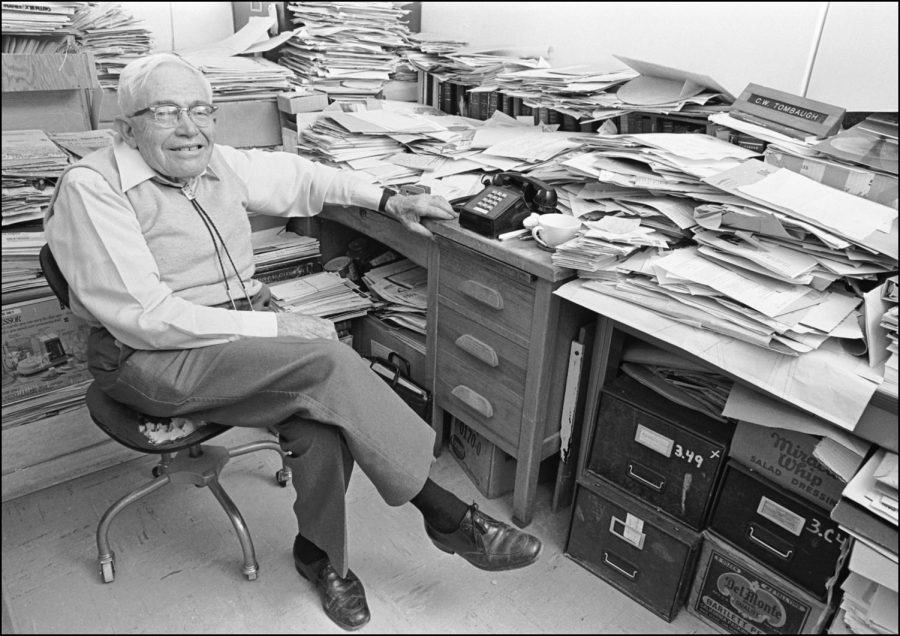NMSU hosts 90th anniversary of Pluto panel
New Mexico State University hosted a panel Wednesday night honoring the 90th anniversary of Pluto’s discovery by Clyde W. Tombaugh. The third floor of Zhul Library was home to a lively audience of enthused astronomers and historians. Host and moderator, Monika Glowacka-Musial pulled together many parts of the Clyde Tombaugh story to create a lively and informational panel.
The panel consisted of Alden Tombaugh (son of Clyde Tombaugh), Kevin Schindler (Lowell Observatory Historian), and NMSU’s own Kurt Anderson, Lyle Huber, Dennis Daily and Tiffany Schirmer.
The event began with greetings from the close community of scholars and astronomy enthusiasts; the room quickly filled. As the sun went down, conversation quickly rose to the stars.
Tiffany Schirmer introduced the legacy of Clyde Tombaugh, the man who discovered Pluto in 1930. After the discovery of Planet X, Tombaugh brought his work to White Sands Missle Range (called White Sands Proving Ground at the time). After which, he began teaching at NMSU in the astronomy and the geology departments.
NMSU has an extensive collection of Tombaugh’s notes, “I don’t think he ever threw anything away,” Schirmer said.
In 1972, Tombaugh gave his collection of notes to the university, in boxes the collection measures out to 150 linear feet. There is a large portion online on the library’s website that is consistently being added to.
Clyde’s son, Alden, spoke to the audience about his father with pride as he played a slideshow depicting the life and legacy he has left. The audience held three generations of Tombaughs.
Clyde’s ashes were scattered at “A Mountain” near the observatories he started on the hill. However, a small portion of his ashes were put upon the New Horizons spacecraft, set for Pluto in 2006, and remain on the ship today.
July 14, 2015 Clyde Tombaugh arrived at Pluto.
Kevin Schindler, Lowell Observatory historian, came all the way from Arizona for the event. Schindler spoke of Pluto’s finding as a “needle in a haystack,” as previously a planet hadn’t been discovered for 60 years.
A quickly moving photo sequence of dots, showing the stars through a microscope, showed the audience what Tombaugh saw — flashes of tiny white dots moving through the sky. The discovery of Pluto was made through these delicately monitored slides.
Schindler commented on the patience it would’ve taken to watch over 7,000 hours of tiny white dots marching across the telescope.
Schindler, who started his speech with, “Who believes Pluto is a planet?” and pointed to the exit for those who didn’t raise their hands, concluded with the importance of Pluto to the scientific method. The reclassification of Pluto, though it broke many hearts, speaks to the ever-changing laws of science.
Running out of time, moderators had to cut off eager panelists to answer questions filling the room. Questions ranging wildly from Pluto’s name choice to Black Holes and String Theory bounced around the room There was never a lull in conversation.
Zhul Library had handwritten correspondence from Tombaugh on display for the audience, as well as an 8 by 10 plate from one of the many telescopes he created.
The event ended with a stargazing experience outside of the library with the panelists and family of Clyde Tombaugh.

Ashleigh Black is a junior at NMSU after recently transferring down from the University of Alaska Anchorage. She is pursuing a degree in Journalism with...

